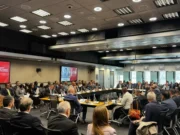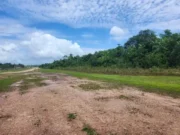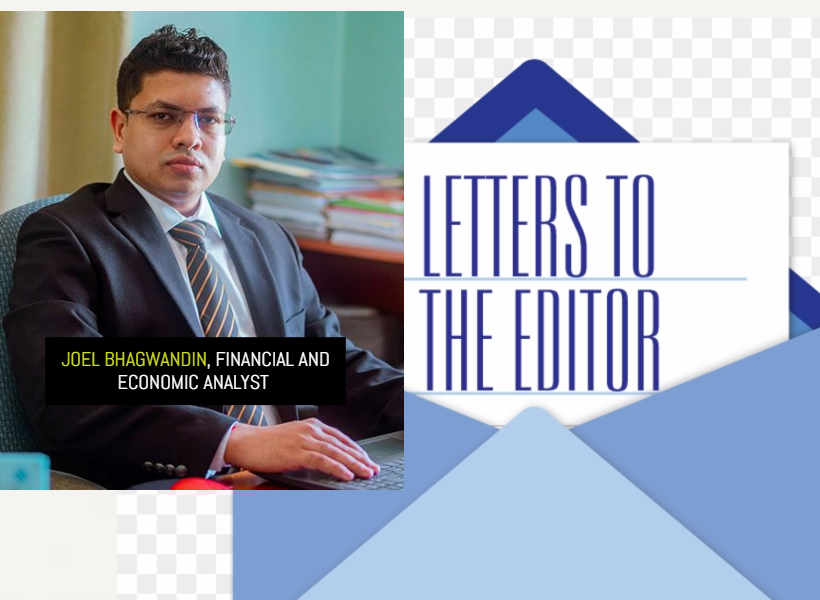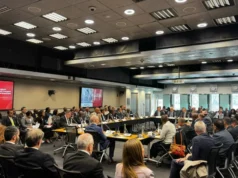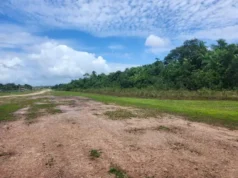Dear Editor,
Last Friday, October 27, 2023, I was privileged to have had a 40 minutes long interview with the Financial Times (FT) on Guyana’s oil and gas sector. The interview was particularly focused on the Petroleum Agreement (2016) and current developments. However, only about 1% of my contribution was captured in the actual news item that was published on October 29th, 2023. As such ,I find it necessary to highlight a greater part of my contribution that was not reflected in the FT article.
The first and main question was about my views on the Production Sharing Agreement (2016) (PSA) and whether I think it is a good deal for the country or not. In responding to this question, I devoted most of the time explaining the context, which was entirely omitted from the FT article. The context is such that, while the PSA (2016) was heavily criticized, including by myself, and the incumbent government while in opposition, the incumbent government gave an undertaking to change the entire framework and not only the 2016 PSA.
I pointed out that the current administration, which was in opposition at that time, had successfully moved a no-confidence motion (NCM) against the APNU/AFC Government in December 2018, following which, elections were constitutionally due three months thereafter. However, this did not happen. Instead, elections occurred one year later, coupled with another five months delay in the elections result, inter alia, the 2020 elections fiasco. So, there was effectively nearly one and a half years delay in the elections which resulted in a change of Government in 2020.ExxonMobil Guyana had commenced production in December 2019, well ahead of the national elections, bearing mind that this was a record achievement to move from discovery to production in such a short period of time (just five years), given that historically, it usually takes about 8-10 years to move from commercial discovery to production. This achievement was of course aided by the deployment of new technologies across the industry. These are some of the primary factors that made it difficult for the renegotiation of the 2016 PSA considering the stability clause, and sanctity of contract, which has an impact on the overall political risk of the country from a global perspective.
I spoke briefly about the geopolitical risks as well and the ramifications―that is, the border controversy between Guyana and Venezuela.
Notwithstanding, the government did deliver on its commitment to change/renegotiate the entire framework. To this end, a new model PSA was developed with significantly improved fiscal terms (royalty up from 2% to 10%, cost recovery down from 75% to 65%, introduction of a corporate tax of 10%, and the 50% profit share), there was the implementation of the Local Content Act and the Gas-to-Energy (GTE) project, together with the improvement of the terms and conditions of the licenses, and the new Petroleum Activities legislation that would repeal the old Act.
In particular, I mentioned that the local content legislation and the GTE will translate to an additional US$2 billion (G$400 billion) or 14% of GDP in both direct and indirect benefits through in country spend and value maximization, under the same agreement.
Moreover, the Government has effectively renegotiated nine (9) other developments that were issued with exploration licenses around the same time as ExxonMobil Guyana in 1999, but those have not yet moved to production as in the case of ExxonMobil Guyana. That means whenever those other developments make any commercial discovery, the new fiscal terms shall apply to those production licenses. Notably, there is one other discovery so far by CGX which was announced last year, that further studies are being undertaken currently to ascertain the commercial viability of same.
In the case of the Stabroek Block, which is an estimate 26,806 km2, I had also noted that after twenty-four years of continuous exploration and based on the total number of discoveries to date (46 discoveries), these discoveries accounted for less than 2% of the massive Stabroek Block. Therefore, when the exploration license expires in 2027, an estimated 97% of the lucrative Stabroek Block is likely to remain unexplored, at which point, any new exploration and production license being sought, the new PSA shall be applied.
Finally, I was asked about ring-fencing and the spending of the resource, to which I went into great detail explaining my views on the pros and cons of ring-fencing, which I had written about recently, and I explained about the governance structure of the Natural Resource Fund (NRF), the withdrawal rules etc. In these respects, I took the opportunity to share with the FT reporter several of articles I had written on these topics.
Yours respectfully,
Joel Bhagwandin

